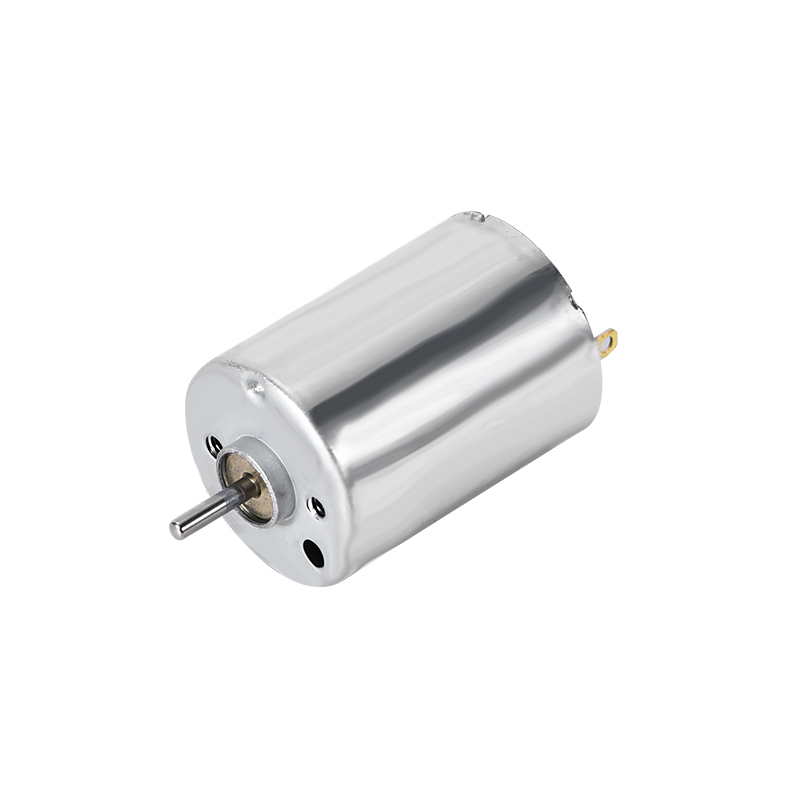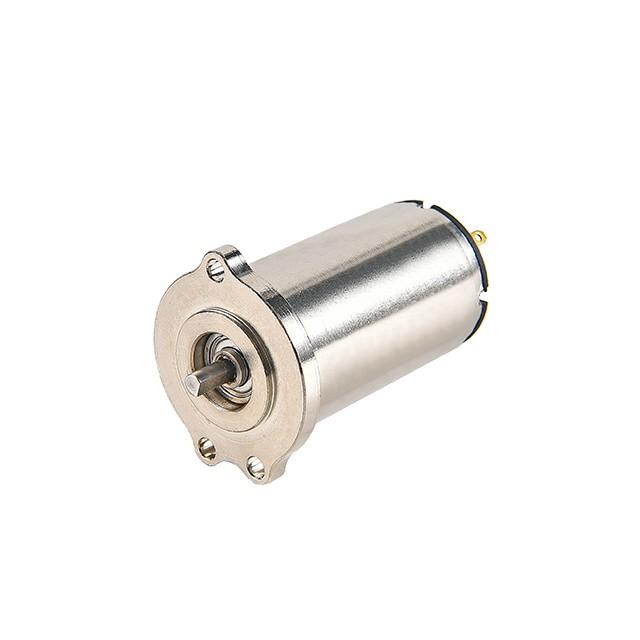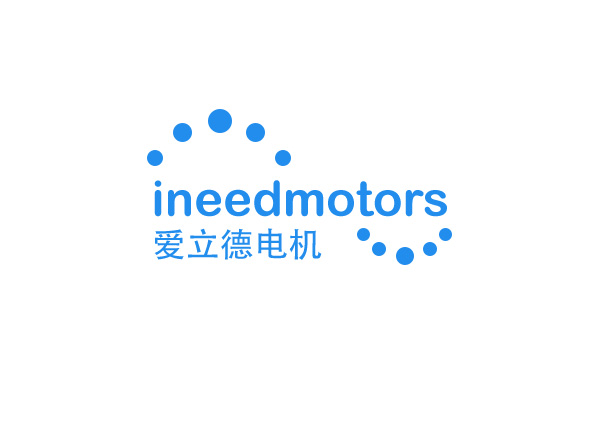How to Select the Right Rotate Motor for Your Industrial Application

Selecting the right motor is crucial for industries as it directly impacts performance, reliability, and costs. Industrial motors account for 69% of electricity usage in factories and 46% of global electricity consumption. Failing to select the right rotate motor can lead to significant delays, costing industries, such as automotive manufacturers, up to $200,000 per hour. However, energy-efficient options like brushless DC motors consume 10% to 20% less energy and can pay for themselves within weeks. Choosing the right motor ensures smooth operations and long-term cost savings.
Key Takeaways
Know what your job needs. Understand the load, speed, and power needed to pick the best motor.
Think about the surroundings. Pick motors that handle heat, water, and dust well for longer use.
Learn about motor types. Motors like DC, AC, stepper, and brushless work for different tasks. Choose what fits your job.
Focus on saving energy. Energy-saving motors cost less and help the planet, making them a good choice.
Use custom options. Adjust motors to match your needs for better work and energy savings.
Know What Your Application Needs to Pick the Right Motor
Load, Speed, and Torque Basics
To pick the right motor, you need to know the load, speed, and torque your job requires. The load is how much force the motor needs to move or lift something. Motors work best when used at 50% to 100% of their load limit, with top performance around 75%. If the load is less than 50%, the motor becomes less efficient.
Speed and torque are connected. Torque is found using the formula Torque = Power/Speed. It depends on the power given and how fast the motor runs. For heavy lifting or high-torque tasks, pick a motor with enough power to handle it. Matching the motor's horsepower and torque to your job keeps things running smoothly and avoids problems.
Industrial motors use 46% of the world's electricity, so efficiency matters. Motors with better efficiency save energy and lower costs.
Effects of Environment (Heat, Moisture, Dust)
The environment affects how well a motor works. High heat can damage parts, making them less effective. This can cause the motor to fail early. Moisture from humidity can lead to rust and electrical problems. Dust can block motor parts, causing wear and poor performance.
Choose a motor that can handle your work environment. Motors with sealed covers keep out dust and moisture. Also, think about changes in temperature and humidity, as these can wear out materials faster.
Space and Mounting Needs

The size of the space and how the motor is mounted are important. Small motors, like micro motors, are great for tight spaces. They give strong power while staying small.
How the motor is mounted also matters. It must fit well in the space and match the setup of your machine. Some companies, like INEED Electronics, let you customize motors to fit your space and mounting needs.
By thinking about these things, you can find the best motor for your job.
Understanding Electric Motor Types for Industrial Applications
DC Motors and Their Uses
DC motors are common in industries because they are powerful and easy to control. They are smaller than AC motors, so they fit in tight spaces. These motors work well when you need steady speed and strong force, like in elevators, robots, or conveyor belts. They also speed up and slow down quickly, helping to save time during production.
A big benefit of DC motors is their ability to handle changing loads while keeping strong force. This makes them great for safety systems like elevators. But they need more care because of parts like brushes. Even with this, their good performance at different speeds makes them a trusted choice for many jobs.
AC Motors: Key Features and Advantages
AC motors are tough and save energy, making them essential in factories. They are often used in fans, pumps, and compressors. Energy-saving AC motors can cut power use by 20-30%, saving money. For example, companies in growing countries can lower energy bills by 40% with better models.
These motors also help the environment. Using energy-efficient AC motors could save 550 TWh of power worldwide by 2030 and reduce pollution. Switching to these motors usually pays off in 2 to 4 years, making them a smart buy.
Stepper Motors vs. Brushless Motors
Stepper and brushless motors are used for different tasks. Stepper motors are very accurate, so they are good for things like 3D printers or CNC machines. But they are less efficient than brushless motors.
Brushless motors are better for high-speed jobs. They last longer and need less care than stepper motors. New technology has made brushless motors even more efficient, so they are now a popular choice in industries.
Efficiency Level | |
|---|---|
Synchronous Reluctance Motors (SRMs) | Very efficient |
Permanent Magnet Synchronous Motors (PMSMs) | Very efficient |
Brushless DC Motors (BLDC) | Medium efficiency |
Induction Motors | Medium efficiency |
Brushed DC Motors | Low efficiency |
Stepper Motors | Low efficiency |
By learning about these motor types, you can pick the best one for your work.
Picking the Best Motor Type with INEED Micro Motors
Finding the right motor is simple with INEED Micro Motors. With over 10 years of experience, they make top-quality motors for many industries. Their small motors are strong and work well in tight spaces.
INEED has many motor types, like DC, AC, stepper, and brushless motors. Each type has a special use. DC motors are great for robots and conveyor belts because they control speed well. AC motors are tough and save energy, making them good for pumps and compressors. Stepper motors are very accurate, so they work well for 3D printers. Brushless motors are efficient and need little care, perfect for fast jobs.
You can customize INEED motors to fit your needs. Choose things like gear ratios, speed, and torque to match your job. INEED also helps you pick the right motor with their expert support. They test every motor to make sure it works well and lasts long.
Choosing INEED means getting smart motor solutions that save energy and money. Their skill and focus on customers make them a trusted choice for industries.
Matching Motor Specifications to Application Needs
Power and Voltage Requirements
Choosing the right power and voltage is very important. It helps the motor work well and meet your needs. Motors need balanced voltage in all parts to run smoothly. Even a small imbalance can lower efficiency and cause damage. Current also needs to stay balanced to avoid overheating.
Check the motor's power factor too. This shows how well it uses electricity. A high power factor means better energy use and lower costs. Adjusting the voltage can make the motor more efficient. This reduces wasted energy, especially when the motor isn't fully loaded. It also helps the environment by cutting carbon emissions.
Speed-Torque Curve Analysis
Knowing the speed-torque curve helps you pick the right motor. This curve shows how torque changes with speed. It helps match the motor to your job. Important points on the curve include:
Full-load torque: Torque needed for full power at normal speed.
Locked-rotor torque: Torque when the motor starts moving.
Pull-up torque: Minimum torque to get the load to running speed.
Breakdown torque: Maximum torque before the motor slows down a lot.
Looking at these points ensures the motor works well in different situations. Tools like the Fluke 438-II Analyzer make this easier. They measure speed and torque while the motor is running. This saves time and gives accurate results without extra sensors.
Efficiency and Performance Optimization
Improving motor efficiency saves energy and money. Better designs, like using lighter materials, can boost performance. For example, adjusting how robotic arms move can save energy and reduce torque.
When picking a motor, check its efficiency rating. High-efficiency motors save energy, last longer, and work better. Matching the motor to your job's needs ensures it performs well. This gives reliable results for your industrial tasks.
Practical Tips for Choosing the Right Rotate Motor
Work Time and Rest Periods
Knowing how long a motor works and rests is important. The work time, or duty cycle, shows how much the motor runs before resting. Motors made for nonstop use can overheat if stopped often. Motors for short tasks may break if used too long.
Think about how your motor will be used. For nonstop factory work, pick a motor with a high-duty cycle. For stop-and-go tasks, like robotic arms, choose one that handles frequent starts and stops. Picking the right motor for its job saves energy and keeps it running well.
Keeping Motors Cool
Cooling motors is key to making them last longer. Motors get hot when they run, and too much heat can break parts inside. Cooling systems, like water cooling, help remove heat better. Water-cooled motors can lower heat by over 50% compared to air-cooled ones.
Choose a cooling system that fits your workspace. For hot places, water-cooled motors work best. Air-cooled motors are fine for cooler areas. Good cooling improves motor performance and helps it last longer.
Taking Care of Motors
Taking care of motors helps them work better and last longer. Regular checks, cleaning, and oiling stop damage. Studies show that keeping up with maintenance lowers the chance of motor failure.
Make a care plan based on where your motor works. Motors in dusty places need more cleaning to avoid clogs. By maintaining your motor, you can avoid breakdowns, save energy, and get the most out of your investment.
Customization Options with INEED Micro Motors
Picking the right motor is easier with customization. INEED Micro Motors lets you adjust motors to fit your needs. This makes them work better and last longer.
Why Customize?
Custom motors match your job needs perfectly. They save energy, work better, and last longer.
INEED Micro Motors offers many ways to customize, such as:
Gear Ratios: Change the gear ratio for the right speed and power.
Output Shaft Design: Pick a shaft design that fits your machine.
Speed and Torque Settings: Adjust speed and power for your tasks.
Connector and Encoder Options: Add parts for better control and tracking.
Environmental Adaptations: Use sealed motors to block dust, water, or heat.
These features make INEED motors great for many industries. For example, use a motor with exact speed control for robots. Or pick a strong motor for factory conveyor belts.
INEED’s experts help you choose the best options. They make sure every motor fits your needs. This ensures the motor works well in real-life jobs.
Customizing with INEED gives you a motor made just for you. It saves energy and improves how your machines work.
Prototyping and Testing for Best Motor Performance
Why Prototyping Matters in Choosing a Motor
Prototyping helps pick the right motor for your job. It lets you test designs before making them fully. This ensures the motor fits your needs. For instance, PCB Stator motors use printed boards instead of copper wires. Prototyping these motors made them lighter and more efficient. This also cut costs and sped up the design process.
Another example is the NI cRIO platform. It allowed engineers to test and change software in 1.5 hours. This quick testing improved motor control systems. Prototyping like this boosts performance and saves time.
Testing Motors for Real-Life Use
Testing checks if a motor works well in real situations. Strong testing looks at energy use, heat, and strength. Important tests include:
Checking energy loss at different speeds and loads.
Mapping heat to improve cooling systems.
Testing strength against vibrations and stress.
Dyno testing is also key. It ensures motors give steady power and torque. This is crucial for industries like cars and planes. Good testing makes sure motors work well where they are used.
Final Tweaks and Checks
Final tweaks make motors work their best. Feedback systems and smart tools improve safety and efficiency. Advanced test setups save time and find problems fast.
Automation helps testing too. Tools like DewesoftX measure motor efficiency. They improve designs and production. These last steps make sure your motor is ready and works great for a long time.
Picking the right rotate motor means knowing what your job needs. You must choose the right motor type and match its power, torque, and speed. This helps the motor work well and avoids big problems. For instance, if a motor is not aligned properly, it can overheat and break. Look at the table below for details:
Evidence Type | Description |
|---|---|
Tolerances | For motors over 50 HP, misalignment should be under 0.001" at 1800 RPM and 0.0005" at higher speeds. |
Consequences | Misalignment causes heat and stress, leading to major failures. |
Case Study | A 50 HP pump motor failed badly due to a 0.065" misalignment, causing long delays. |
Testing and prototyping are key to making sure motors work well. These steps:
Make the motor better and fix mistakes early.
Help improve the design and how it’s made.
Confirm the motor meets needs before making many of them.
By doing these things, you can pick a motor that saves energy, lasts long, and works reliably.
FAQ
What matters most when picking a rotate motor?
The key is knowing what your job needs. Think about load, speed, torque, and the environment. These help the motor work well and last longer in your setup.
How do I pick the right motor size?
Check the load, speed, and torque your job needs. Use tools like speed-torque charts to match the motor to your work.
Why does motor efficiency matter?
Efficient motors use less energy and cost less to run. They last longer and help the planet by cutting pollution. Picking an efficient motor saves money over time.
Can motors be customized for my needs?
Yes, you can adjust motors to fit your job. INEED Micro Motors offers changes like gear ratios and speed settings. Custom motors work better and fit your needs perfectly.
How do I test if a motor works for my job?
Try prototyping and testing in real situations. These steps show if the motor works well for your tasks. Testing avoids mistakes and saves money.
Tip: Ask experts like INEED Micro Motors for help choosing and testing the best motor.
See Also
Choosing Ideal Mini DC Motors for Industrial Uses
Understanding Types and Uses of Rotating Motors
How to Choose a 3 Volt DC Motor for Projects
Guidelines for Choosing Planetary Gear Motors for Screwdrivers
Investigating Vibration Motor Uses in Contemporary Industries
Get Custom Micro DC Motors from
INEED Motors!
Leading Brand in Vibration Motor Manufacturing Industry
